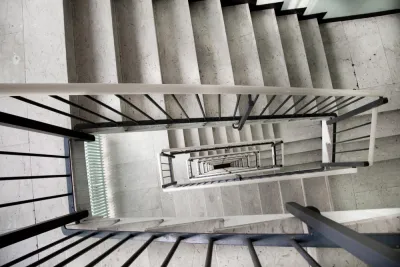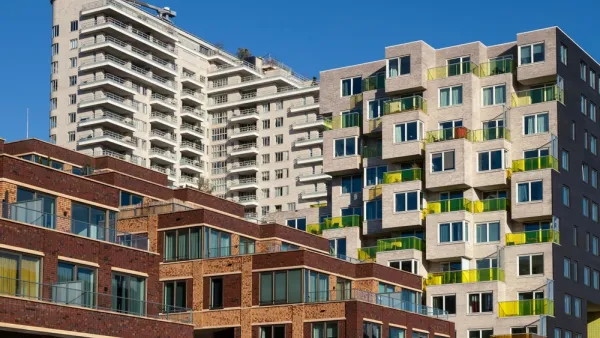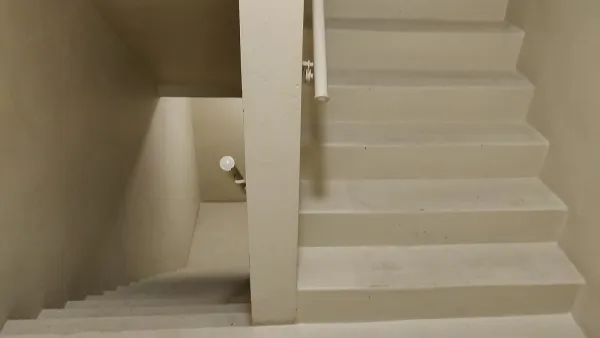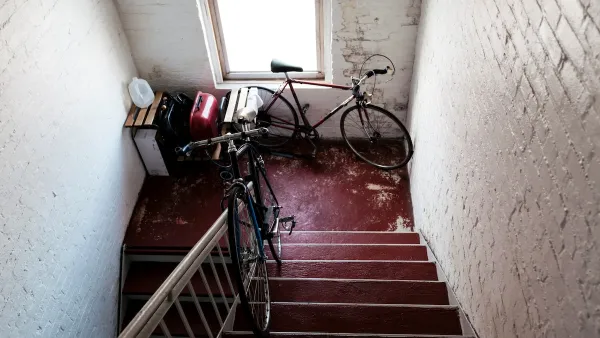Critics of the double-staircase mandate for multi-story buildings argue that it does little to improve fire safety while raising the costs of housing construction and limiting community interaction.

“If a rule to allow new construction to have a single staircase up to six stories is approved, then smaller buildings that better foster community among residents could begin popping up in cities and towns across the commonwealth [of Virginia],” reports Wyatt Gordon for The Virginia Mercury. “Although the United States and Canada lowered the height limit for such construction to three stories nearly a century ago, the rest of the world never allowed fears of fires to hinder such housing.” In fact, many of Virginia’s older buildings were constructed before the double-staircase rule was put into place.
“Modern American building codes mandate double-loaded staircases if a building exceeds three stories, inevitably leading developers to build the big, bland 5-over-1s” and forcing buildings to take up more real estate. “Efforts to present fire experts with the facts on single staircase structures are already underway giving advocates hope that fire officials’ support can be secured before DHCD comes to a final decision later this year,” notes Gordon.
Proponents of single-staircase buildings point to several advantages. “Instead of the long, dark corridors demanded by double-loaded staircases, single staircase buildings create community through their compactness.” Additionally, “When there is no cavernous hallway going straight through the middle of the building apartments can stretch from one side of the building to the other, enabling cross ventilation and sunlight on both sides of the unit.”
Like parking minimums and other building code requirements, the double-staircase mandate can have a powerful impact on housing affordability and construction costs. “Increased living space and lower construction costs translate to more affordable rents without any state subsidy required,” making it easier for private developers to build more affordable housing.
FULL STORY: How allowing single-staircase buildings could change Virginia’s housing market

National Parks Layoffs Will Cause Communities to Lose Billions
Thousands of essential park workers were laid off this week, just before the busy spring break season.

Retro-silient?: America’s First “Eco-burb,” The Woodlands Turns 50
A master-planned community north of Houston offers lessons on green infrastructure and resilient design, but falls short of its founder’s lofty affordability and walkability goals.

Delivering for America Plan Will Downgrade Mail Service in at Least 49.5 Percent of Zip Codes
Republican and Democrat lawmakers criticize the plan for its disproportionate negative impact on rural communities.

Test News Post 1
This is a summary

Test News Headline 46
Test for the image on the front page.

Balancing Bombs and Butterflies: How the National Guard Protects a Rare Species
The National Guard at Fort Indiantown Gap uses GIS technology and land management strategies to balance military training with conservation efforts, ensuring the survival of the rare eastern regal fritillary butterfly.
Urban Design for Planners 1: Software Tools
This six-course series explores essential urban design concepts using open source software and equips planners with the tools they need to participate fully in the urban design process.
Planning for Universal Design
Learn the tools for implementing Universal Design in planning regulations.
EMC Planning Group, Inc.
Planetizen
Planetizen
Mpact (formerly Rail~Volution)
Great Falls Development Authority, Inc.
HUDs Office of Policy Development and Research
NYU Wagner Graduate School of Public Service





























